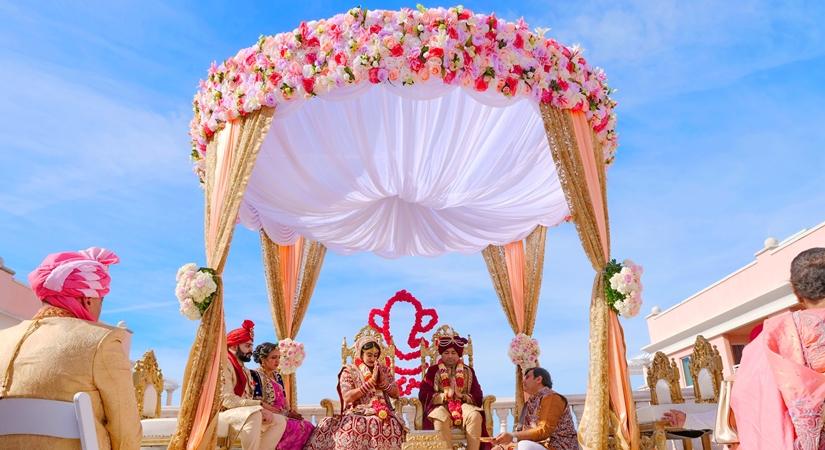Cover Story
Future trends in the Indian wedding industry

How has COVID-19 shaped the Indian wedding? An overview
BySiddhi Jain
June 18, 2020 (IANSlife) With higher preferences for briefer ceremonies, open-air venues, sit-down meals and guests being welcomed in dedicated time-slots, the face of the Indian wedding is going to change like never before.
According to a survey by The Knot WorldWide, most engaged couples are being positive and not canceling their wedding bookings - 92 percent globally, 82 percent in India. The remaining few are rescheduling for either later this year or 2021. With a strong desire to celebrate their weddings as they had originally planned, 73 percent of couples in India and 87 percent globally do not plan to reduce their overall guest count and 87 percent in India and 90 percent globally do not anticipate lowering their budget, if government regulations would permit.
"Although, the impact has definitely led to many wedding professionals upscaling themselves as well as their businesses and embracing technology for the future, by strengthening their online presence and handling end to end solutions over the phone, both for the wedding ceremony itself or planning it. We are already witnessing weddings with restrictions with the help of technology like Zoom calls or digital invites, thus broadening the horizons of possibilities for Indian couples. The wedding industry post-Covid-19 will have a new reality which will follow new wedding formats keeping in mind health and safety parameters and rethinking the guest experience," says Ankur Sarawagi, India Country Head, The Knot Worldwide.
As per the wedding technology platform, the following trends currently being followed will continue to dictate the future of weddings and the industry overall.
Rise of the Minimonies: The concept of mini-ceremonies or ‘mini-monies’ on pre-planned dates with an intimate gathering followed by a larger celebration sometime in the latter part of the year on non-saaya dates.
Health and safety measures: Installation of sanitisation fans similar to mist fans to make sure all the guests walking in are sanitised without manual effort. Guests will be given sanitisation kits instead of welcome kits and asked to procure a medical certificate and post the function, the wedding planning team will make calls to the guests to ensure the invitees are in good health.
Weddings in shifts: Couples who do not want any change in plans including a full guest list can celebrate as they initially planned, but in shifts. With shift weddings, couples can host their wedding day festivities at their original venue and with their full team of wedding vendors but the guests come in shifts, allowing them to adhere to social-distancing guidelines.
Wedding dates: The focus will not be only on saaya dates, going forward. This will majorly depend on availability of venues, wedding service partners, vendors as well as government and required authorities permissions.
F&B: While delectable food is still top of mind for couples, the manner in which dishes are prepared and served will follow stringent safety precautions. Most venues have confirmed that they will likely opt for a sit-down plated meal instead of a buffet. This would also mean no long queues and crowds which are a risk.
Venue preferences: Open-air venues will see greater demand, irrespective of the weather. These eliminate the possibility of guests feeling confined in a closed, high-risk air conditioned space. Would require fighting against nature’s elements like but would ensure social distancing with spaced-seating arrangements.
Go digital: To limit exposure and to save time, money and energy, couples will look at creating e-invites and their own wedding website. These digital invitation cards can be emailed and whatsapped to guests, along with the link of the wedding website.
HMU: Trends will also evolve with more focus on eyes and interesting hairstyles in case the bride decides to wear a mask. There will also be a high focus on sanitization since the make-up team works in close proximity to the bride for extended hours with most of the makeup tools being disposable and the team to wear masks, face shields and PPE kits for all appointments.
Capturing moments: Photography to go back to very intimate, candid shots since outdoor locations with lavish backgrounds might not be available, natural elements like sunsets can become preferred backgrounds.
While weddings take on a new form, what remains constant is the desire for human connection and the celebration of love with loved ones - no matter what that celebration looks like.
(This article is website exclusive and cannot be reproduced without the permission of IANSlife)
Siddhi Jain can be contacted at siddhi.j@ians.in


